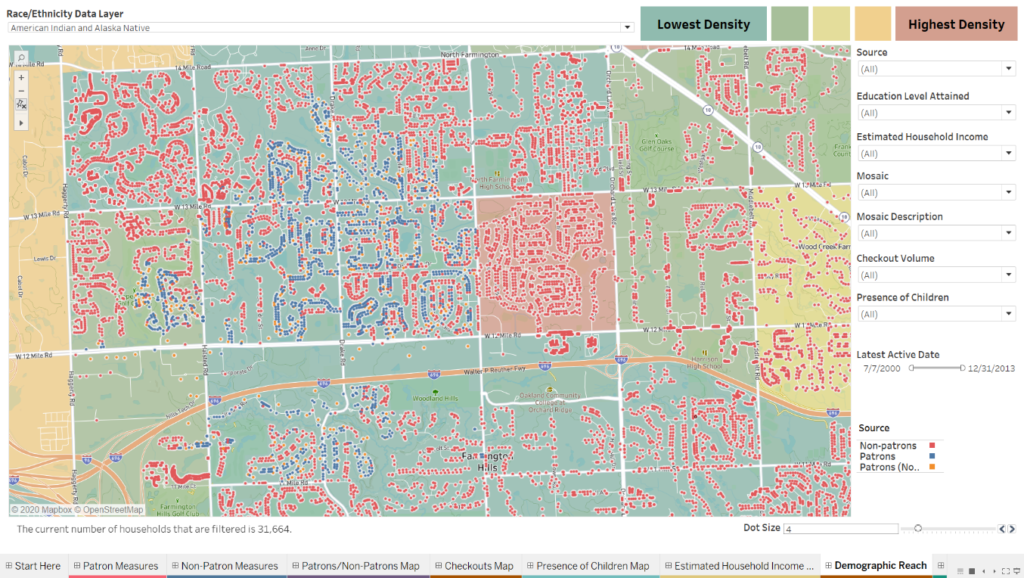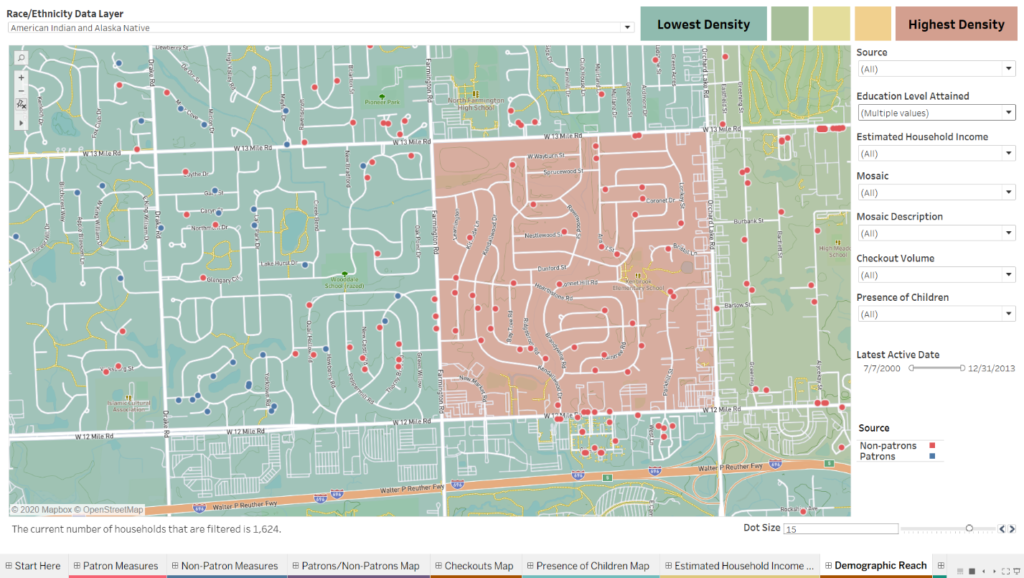Reducing Equity Barriers to Give Underserved Groups a Voice
| By Lisa Novohatski, Analytics Consultant |
Public libraries are looking to eliminate racial and social equity barriers in their programs, services, policies, and practices. I not only see this in library mission statements but in the conversations I have with directors and staff across the nation. Many have been tasked to determine how well their library serves diverse groups in the community. And until now, I’ve had the same question as the many individuals I’ve spoken to.
How do we identify the existence of racial or social equity barriers?
To know a barrier exists, you have to see it first.
Once you see it, you can measure it.
Then you can take steps to eliminate it.
Gale Analytics: Community InsightsandPatron Insightsnow offers the ability to understand demographic reach by combining a census map of race/ethnicity by tract with variables such as education level, household income, and checkout volume.
Users can then filter by education level and estimated household income, among other characteristics, to visualize how well the library is meeting the needs of its diverse community.

For example, in the sample data below, we selected American Indian and Alaska Native, and further filtered the results by selecting patrons and nonpatrons who likely attained less than a high school diploma.

我们可以看到,在特定的区域高的洞穴ity (red tract groups) of this race/ethnicity, the library doesn’t have any existing patrons (blue dots). In areas of lower density (green or blue tract groups), the library has existing patrons.
From this data and visual, we can determine that the library isn’t reaching this community. Having access to this data gives the library an opportunity to reach out to this area (via direct mail, flyers, etc.) with library offerings related to vocational training, upskilling, or even high school completion offerings.
Libraries are an important resource in a community, and can be influential in helping to break down equity barriers.Gale Analyticsis a powerful solution to help decision-makers, and one that is enhanced by the feedback of customers and librarians across the nation.
To begin, or continue, your journey to reduce barriers in your library’s offerings,please request a demo. We’d be happy to show you the many features and functionalities of this resource.
Sneakers

I see how we can tabulate one-family homes on the map. What does the map look like with apartment buildings and urban areas?
Hi Harry,
为目的的分析,我们把所有的家庭eparate. This means that individual units are treated as individual households and are represented as such in the dashboards. On the maps, to visualize these households, we collapse patron households and non-patron households at the same address (so patron households: 123 main street, apt 1 and apt 2 will show as 123 main street patrons and non-patron households 123 main street, apt 3 and apt 4 will show as 123 main street non-patrons) and the dot size is determined by the total checkouts across all households. Seeherefor example.
Let me know if you need any more detail or want to talk this through.[email protected]